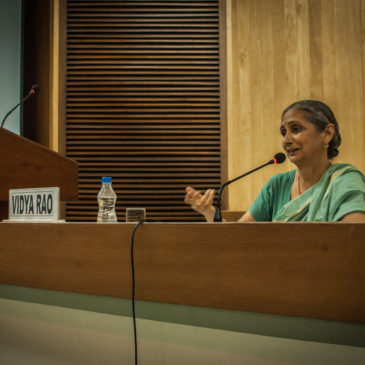Vidya Rao: Song as Continuity
Through the small changes, the tangents, the idiosyncrasies, across decades and regions, a genre grows, expands and relocates. “With Thumri, continuity and discontinuity are not sufficient words. With song traditions, one needs to break those categories.” In the fourth lecture of the LILA PRISM Lecture Series 2014, Thumri-Dadra performer and writer Vidya Rao invited the audience for a journey through the dis/continuous history of the Thumri genre. “In India, we say one should never seek to know the source of a river!” Vidya Rao led the exploration of Thumri’s evolution through a dozen audio excerpts from performances, twelve halts illustrating departures, alternatives and junctions. The examples started with Malka Jaan, one of the earliest singers ever recorded in India, in 1904. At the time, Thumri was performed by courtesans for the entertainment of an elite male audience and for their patrons, with whom they often also were involved in sexual liaisons. But, more than just channels for the sensuous, the Thumri singers influenced their cultural environments.


